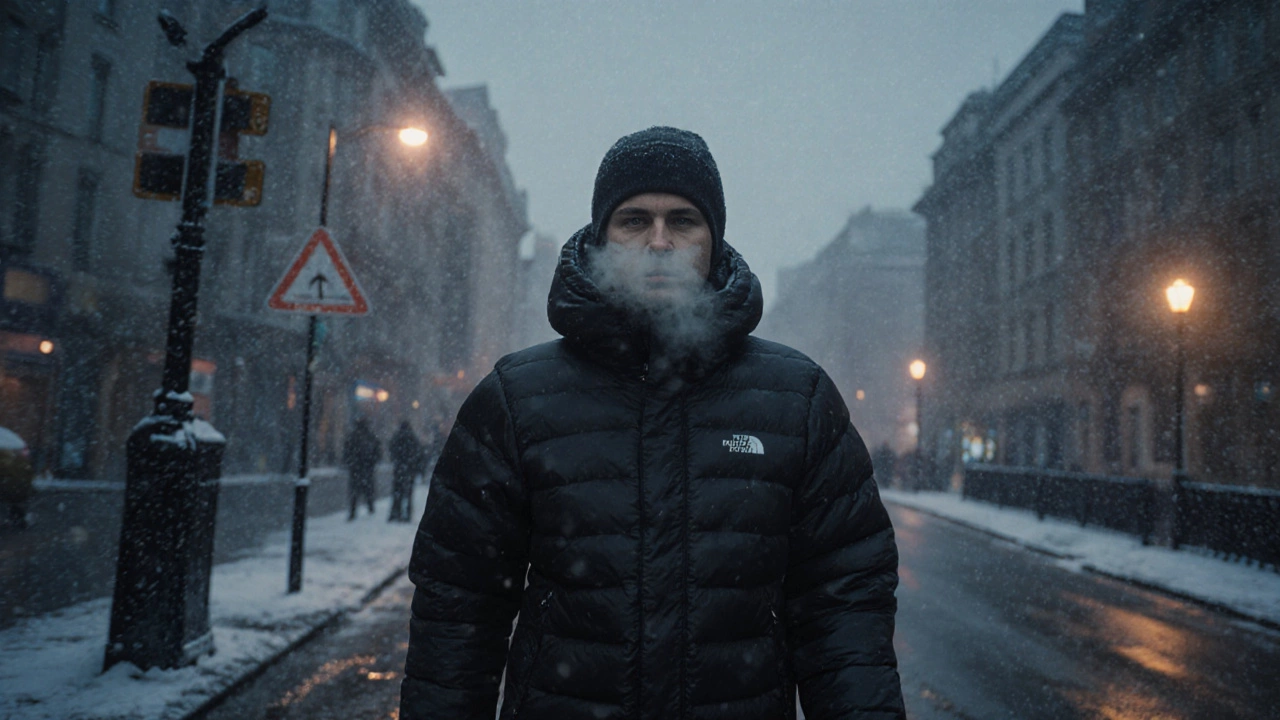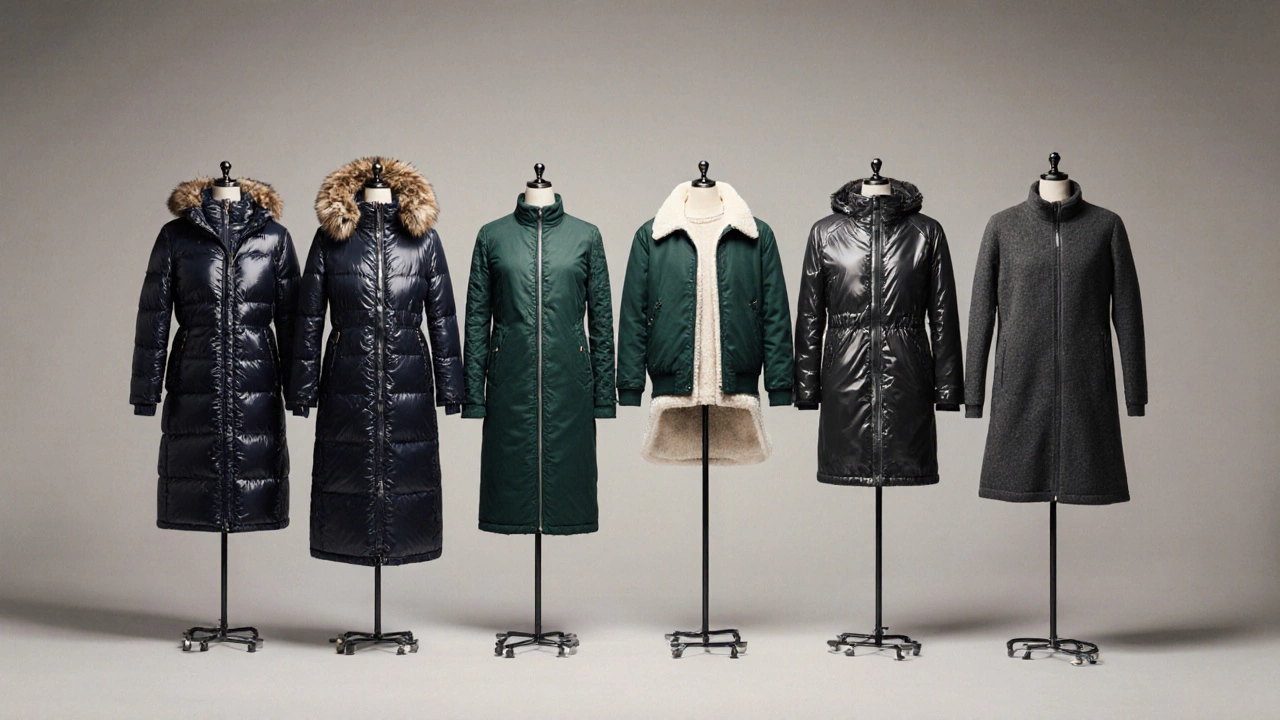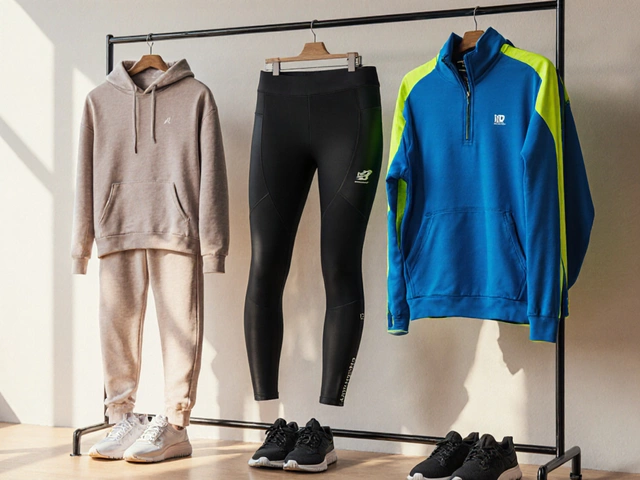Which Jacket Style Keeps You Warmest?

- Cleo Fairchild
- 12 October 2025
- 0 Comments
Jacket Warmth Calculator
Your Conditions
Recommended Jacket
Optimal warmth for your conditions
Parka
Long insulated coat with fur-trimmed hood and wind-proof shell
When the temperature drops below freezing, the right outerwear can feel like a hug. But not every jacket is created equal - some trap heat like a furnace, while others let the chill slip through. If you’ve ever wondered which style actually makes the warmest jacket claim, you’re in the right place.
How Warmth Is Measured in Outerwear
Before naming the champion, it helps to know the metrics experts use:
- Insulation type: Natural down, synthetic fibers, or dense wool each have a different heat‑retention profile.
- Fill power: For down, this number (measured in cubic inches) shows how much space one ounce of feathers can fill - the higher, the loftier and warmer.
- Clo rating: A unit that quantifies the thermal insulation of clothing. A typical lightweight sweater is around 0.3clo; a heavy winter coat can exceed 2.0clo.
- Weight vs. warmth: A good winter jacket should deliver high warmth without weighing you down - especially if you’re on the move.
These factors let you compare styles on a level playing field.
Major Jacket Styles and Their Warmth Potential
Below is a quick rundown of the most common contenders. The first mention of each style includes schema.org microdata so search engines can recognise the entities.
Down jacket is a lightweight outerwear piece filled with the soft, fluffy feathers from waterfowl, prized for its high warmth‑to‑weight ratio. Down’s natural loft traps air superbly, making it the go‑to for climbers and skiers who need warmth without bulk.
Parka is a long, insulated coat often featuring a fur‑trimmed hood, a wind‑proof shell, and a generous amount of down or synthetic fill. Its extended length protects the hips and thighs, the areas most prone to heat loss.
Synthetic insulated jacket is a garment packed with man‑made fibers like PrimaLoft that mimic down’s loft while retaining warmth when wet. Perfect for damp climates where wet down would lose its puffiness.
Wool coat is a classic overcoat woven from merino, lambswool, or cashmere, offering natural heat regulation and odor resistance. Wool’s fibers trap air and release moisture, keeping you warm even during active movement.
Technical shell with insulated liner is a two‑layer system where a waterproof, breathable outer shell houses a removable insulated layer, often synthetic. This combo excels in extreme weather because the shell blocks wind and moisture while the liner provides core heat.
Insulated bomber is a shorter, waist‑hip length jacket that combines a padded front panel with a ribbed cuff, echoing the classic bomber silhouette. Its snug fit minimizes cold air infiltration, making it surprisingly warm for its size.
Fleece‑lined coat is a midweight coat lined with brushed polyester fleece, delivering soft, consistent warmth without heavy insulation. Ideal for milder winter days or as a layering piece under a shell.

Warmth Comparison Table
| Style | Insulation Type | Fill Power / Synthetic Rating | Weight (g/m²) | Approx. Clo Rating | Ideal Use | Price Range (USD) |
|---|---|---|---|---|---|---|
| Down jacket | Natural down | 600‑950cuin | 150‑250 | 1.2‑1.8 | Backpacking, ski days | 150‑400 |
| Parka | Down or synthetic | 600‑850cuin (down) / 800‑900rating (synthetic) | 250‑350 | 1.5‑2.2 | Urban commuting, cold‑weather travel | 200‑500 |
| Synthetic insulated jacket | Man‑made fibers | 800‑950rating | 180‑260 | 1.1‑1.6 | Wet climates, everyday wear | 120‑350 |
| Wool coat | Natural wool | - | 300‑450 | 1.4‑2.0 | Formal occasions, city winter | 250‑600 |
| Technical shell + insulated liner | Synthetic liner + waterproof shell | 850‑1000rating (liner) | 220‑340 | 1.6‑2.4 | Mountain expeditions, severe storms | 300‑700 |
| Insulated bomber | Down or synthetic | 500‑750cuin (down) / 750‑850rating (synthetic) | 160‑230 | 1.0‑1.4 | Urban casual, moderate cold | 130‑280 |
| Fleece‑lined coat | Polyester fleece | - | 200‑300 | 0.9‑1.3 | Early fall, layering | 100‑250 |
Choosing the Right Warmest Jacket for Your Needs
- Define your climate. If you frequently face sub‑zero temperatures and high winds, a parka with a high‑fill‑power down core and a wind‑proof shell is unbeatable.
- Consider activity level. For high‑intensity pursuits (skiing, snowshoeing) a lighter down jacket or synthetic insulated layer lets you move freely while staying warm.
- Ask about moisture. In places like the UK where rain and snow mix, synthetic insulation retains loft when damp, outperforming down.
- Mind the length. Longer cuts protect the torso and hips; shorter jackets (bomber, fleece‑lined coat) are fine for milder days or as mid‑layers.
- Budget vs. performance. Premium down (950cuin) costs more but offers superior warmth per gram. If price is a constraint, a high‑quality synthetic with an 800‑rating performs admirably.
By ticking these boxes you’ll zero‑in on the style that truly feels warmest for you, rather than just the most expensive.

Care & Maintenance - Keeping the Warmth Alive
- Down care: Use a front‑loader on gentle cycle, wash with a down‑specific detergent, and tumble dry on low with clean tennis balls to restore loft.
- Synthetic fill: Machine wash cold, avoid fabric softeners, and tumble dry low; the fibers bounce back after each wash.
- Wool: Hand‑wash or dry‑clean; lay flat to dry to prevent stretching.
- Waterproof shells: Re‑apply a DWR (Durable Water Repellent) spray yearly to keep the outer layer shedding water.
- Storage: Store jackets hanging on wide padded hangers; avoid compression bags that crush insulation.
Proper maintenance means the jacket’s thermal rating stays where the manufacturer intended it to be, season after season.
Frequently Asked Questions
Which jacket style is best for wet snow?
Synthetic insulated jackets beat natural down in wet snow because the fibers keep their loft even when damp. Look for an 800‑rating PrimaLoft or similar.
Do parkas really keep the hips warm?
Yes - the longer cut shields the thigh and hip area, which are major heat‑loss zones. A parka with a fur‑trimmed hood also reduces heat loss from the head.
Is a wool coat warmer than a down jacket?
Usually not for extreme cold. Wool provides good baseline warmth and breathability, but a high‑fill‑power down jacket offers a higher clo rating with less weight, making it superior in very low temperatures.
Can I layer a fleece‑lined coat under a shell?
Absolutely. The fleece adds consistent warmth while the shell handles wind and rain. This combo is a flexible system for changing conditions.
What fill power should I look for in a down parka?
Aim for 600‑800cuin for everyday winter wear. For high‑altitude or arctic trips, 800‑950cuin provides the maximum loft and heat retention.


